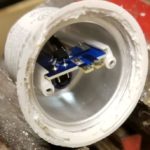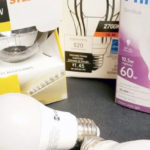Leland Teschler, Executive Editor
One of the big justifications for smart home electronics and internet-of-things pipe dreams is a concept called time-of-use electricity billing. Long used for industrial concerns, the plan is to bring TOU billing to households, so they’ll be charged more for electricity they use during periods of peak use, less for juice consumed otherwise. The idea is to give people incentives for, say, running the dishwasher late at night rather than right after dinner.
Right now, TOU billing for consumers can only be found in a few pilot projects. But a lot of  consumer electronics gizmos coming off drawing boards today list TOU billing as among their main justifications. Without TOU billing, it’s tough to see why you’d bother with second-by-second control of your water heater and home air conditioning.
consumer electronics gizmos coming off drawing boards today list TOU billing as among their main justifications. Without TOU billing, it’s tough to see why you’d bother with second-by-second control of your water heater and home air conditioning.
Indications are that appliance makers may be in for a big downer if they see a bonanza in TOU-inspired gadgetry. That seems to be one of the messages coming out of a study of a residential TOU trial conducted by researchers from The Ohio State University and the University of Southern Calif.
Surveying about 19,000 TOU customers in the southwestern U.S., the researchers found that most of them had a limited understanding of their own energy use – good news, you’d think, for purveyors of gear that reads out energy use to the millisecond. The problem was that consumers thought they’d save money on TOU rates by strategically using their appliances. In actual experience, consumers typically saw little difference in their bills.
Apparently, that realization was disappointing, and giving consumers a better grasp of their energy use didn’t help matters. The researchers explain that people think the appliances they frequently interact with use more energy than they really do. Writing in the journal Nature Energy, they said “People probably overestimate the amount of their energy use that can be shifted through highly visible actions, such as lighting, versus less visible actions such as heating and cooling….In addition, optimism bias may lead to perceiving greater ability to shift electricity use away from on-peak time (and more control over bills) than is truly possible.”
Reading between the lines, it’s not hard to see what happened in this pilot program which took place during summer months: Consumers arrived home from work, typically found the internal temperature of their residence was somewhere near 90°F and immediately hit the a/c, peak rates or no. Then to save money, they turned off a light bulb or two. When the utility bill arrived, sadness ensued.
The results of the study don’t bode well for TOU promoters. Even more worrisome is that the people who took part in the study were probably more sympathetic to TOU than the general population. All of them voluntarily opted in for the billing scheme. Those in the study were also better educated, older, and included a higher percentage of homeowners than the U.S. average.
Expect a lot more resistance to TOU billing rolled out to a broader base of much less understanding consumers, a few of whom will undoubted be convinced TOU is some kind of government conspiracy. When that happens, the entities expressing the most disappointment won’t be consumers but rather the companies whose economic success depends on selling
TOU contrivances.






I had always thought that a better solution was a reversal of the sliding discount, where the more power one used the cheaper it became. Instead, raise the rate per KwH after some number. That would be easier, cheaper to do, and certainly reward conservation a bit. Also it would benefit those less well off. An added advantage is that it might be a lot simpler to understand. A solution that requires NO HARDWARE CHANGES at all could be the way to go.